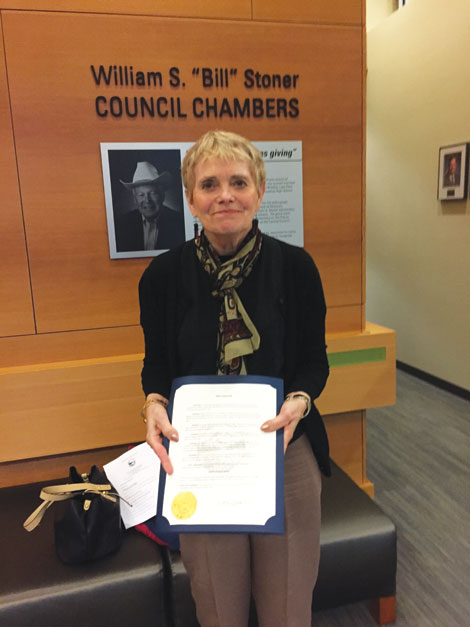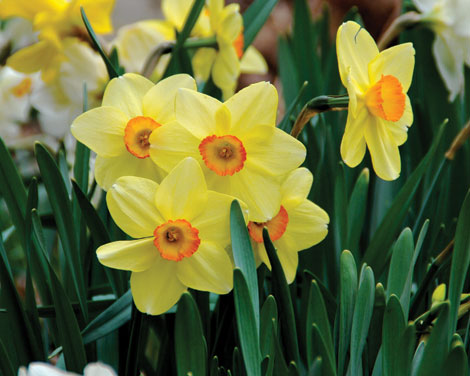Volunteering adds purpose to lives
On Oct. 24, Puyallup Area Aging in Community Committee sponsored a Volunteer Fair at the Fred Oldfield Western Heritage and Art Center, located at the Washington State Fairgrounds in Puyallup. The purpose of the event was to recruit volunteers for local programs and explain just what their volunteer work would involve.
The event went very well, said Linda Henry, president of the Aging in Community board.
“We had positive comments about the location, and 86 people attended,†she said.
Of those in attendance, 31 percent of folks who completed an evaluation said they found a spot where they would like to volunteer, and 41 percent indicated that maybe they found a volunteer opportunity.
“The goal was to match organizations who are looking for volunteers with people in the community who want to volunteer,†said Henry.
Fifteen organizations participated, including the Puyallup Police Department, Tahoma Audubon Society, Statewide Health Insurance Advisors, Communities in Schools of Puyallup, YMCA, Sunny Sky’s Animal Rescue, FISH Food Bank and Associated Ministries.
Puyallup Area Aging in Community is a non-profit, charitable educational advocacy group. Its “main purpose is educating the community and the city (of Puyallup) on aging issues, allowing the community to provide opportunities for people to stay in the community and how to be an age friendly community,†Henry said.
An age-friendly community enhances opportunities for people to volunteer and stay engaged in their community, she said.
Patsy Herzog volunteers at Sunny Sky’s Animal Rescue in Puyallup.
“I take care of animals that are waiting to go to their forever homes,†said Herzog, who helps them with socialization and takes them for walks. She also cleans kennels and works with clients looking for an animal to adopt.
“We make sure we fix clients up with an animal that would fit them best,†she said.
Herzog has been volunteering twice a week for the last five years.
“It is very fulfilling. When you look at these little dogs and cats in kennels and then take them out, even though it isn’t a home environment, when you cuddle and give them the love and affection, it is fulfilling to know you are helping them,†said Herzog, adding that her volunteer efforts get her out of the house and away from her chores.
“It makes you feel good when you are helping someone else,†she said.
Patty Moore-Hamilton would agree.
Moore-Hamilton, who retired in 2011, said her twice-a-week volunteer work at a FISH Food Bank near Puyallup keeps her busy.
She stopped one day at the food bank to drop off some donations for its clothing bank and asked the staff if they needed volunteers. That question brought a “heck yeah†response and an application form, and soon she was working every Monday and Wednesday.
“When I wake up, I say today I get to go to the food bank,†said Hamilton, who puts in about six hours on Mondays and nine on Wednesdays.
FISH had a table set up at the Volunteer Fair at the fairgrounds and gained three new volunteers that day.
“This is where I am supposed to be and doing what I’m supposed to do. I love it,†Hamilton said.
Henry said that 23 percent of older adults volunteer, and volunteering is rewarding because you make a difference in someone’s life. It also helps people find meaning and purpose at any age and brings improved health and well-being, she said.
Aging in Community addresses aging issues, including quality-of-life, independent housing and transportation concerns that will help to make the area livable for all ages.
“Research shows that people who volunteer are healthier because they get out of their homes and are involved in both civic and social engagement,†said Henry.

 Before the crowds in cars started streaming into Spanaway Park for Pierce County Parks and Recreation’s 21st annual Fantasy Lights holiday extravaganza, crews that included John Albrecht (right in the picture) and William Stewart spent weeks moving frames and thousands of multi-colored lights into position for the nearly 300 elaborate displays. Starting Nov. 26 and continuing through Jan. 1, the largest drive-through light show in the Northwest is open from 5:30 to 9 p.m. Visitors can take the two-mile slow drive through the park for an eyeful of displays – some of them animated – in a wide variety of holiday themes. Admission costs $14 per car.
Before the crowds in cars started streaming into Spanaway Park for Pierce County Parks and Recreation’s 21st annual Fantasy Lights holiday extravaganza, crews that included John Albrecht (right in the picture) and William Stewart spent weeks moving frames and thousands of multi-colored lights into position for the nearly 300 elaborate displays. Starting Nov. 26 and continuing through Jan. 1, the largest drive-through light show in the Northwest is open from 5:30 to 9 p.m. Visitors can take the two-mile slow drive through the park for an eyeful of displays – some of them animated – in a wide variety of holiday themes. Admission costs $14 per car.